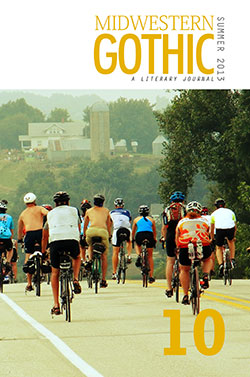Calves’ Feet and Cake: Adventures in 100-Year-Old Recipes
I dreamed of calves’ feet for two weeks, wondering if I could actually boil four of them in my kitchen. The goal? Homemade gelatin according to the recipe in Helen Cramp’s 1913 edition of The Institute Cookbook. I wanted to engage the cookbook the way I had the other vintage books, to get underneath the words, read between the lines. Seemed like the best way to do that was to actually make something—and calves’ feet captured my get-to-know-what-you-eat side.
I’ve been cleaning out my eating habits since the slow plow through Michael Pollan’s Omnivore’s Dilemma several years ago. If you make it through, it’s the kind of book that changes you. It’s difficult to return to your row of General Mills cereals (recipes are kept very secret), no matter how much you love them.
But Pollan’s ideas simply tap into an age-old wisdom about what we eat. From Cramp’s introduction:
One point worth mentioning here, and that is that ‘ready to eat’ foods, except perhaps in the case of cereals, where the saving of fuel is worth considering, are expensive and not always so good as the old-fashioned dishes prepared in the old-fashioned way. The cook who is exceedingly pressed for time or the housewife who does her own cooking may be justified in using instantaneous, ready flavored gelatin, for instance; but the result is seldom so good as the gelatin prepared by the old method, and the cost is decidedly greater.
Wondering about this “old method,” I flipped to the index and scanned for “gelatin.” Couldn’t find it. But I did stumble on “Calf’s Foot Jelly.”
Turns out that that homemade jello (using gelatin made from grass-fed cows, of course) has quite a following. Gelatin itself has some good health benefits.
It also turns out that I’m a slow foodie wuss. I can’t boil calves’ feet in my kitchen.
But I’m kinda good at cookies. And though there were no cookies listed in this cookbook, I went for something as close as I could get: the “Snippy-Doodle” cake.
I soon realized what a difference 100 years make—beyond someone’s comfort with boiling calves’ feet in their kitchen. The cultural understanding of how to cook was different. Directions often come across as vague, at least compared to modern versions where I’m used to recipes telling me exactly how fast my KitchenAid should be “creaming” the butter and sugar or exactly how hot the oven needs to be.
I remember the moment years ago when I understood my grandmother’s beloved chicken and dumpling recipe would die with her unless I wrote it down. So I followed her through the process, asking specifics for each ingredient.
It’s this much shortening, she explained, measuring off her pointer finger. And this much salt. She cupped her palm and shook out a sparkling little pile.
I felt the same sort of helplessness the snowy afternoon I tackled the Snippy Doodle cake. There were a few times I had to uncomfortably wing it.
The first step involved creaming butter and sugar. As I watched my KitchenAid whirl, it didn’t look like any creaming was happening, so I added another tablespoon of butter. And then another, my confidence waning already.
The instructions suggested baking in a moderate oven, so I checked to see how high mine actually went (550) before settling into the 350 range. There was no baking time given, so that, too, was a guess. I started at 30 minutes and ended up adding 10 more.
It smelled right when I pulled it out—all cinnamon and sugary. But you only have a bake a cake once to know that the real test is when it cools (does it sink in the middle?) or try to remove it from the pan (did I adequately butter the bottom?).
So how did it turn out? I ate three slices in one sitting. It wasn’t fancy, but it was good.
A couple of weeks ago, Caitlin O’Neil wrote about the similarities between cooking and writing and I couldn’t help but think of that as I cut that extra slice… and then another. Sometimes, having the roughest of guidelines forces you trust what you know and just go with it.
Wish I could’ve mustered that for the calves’ feet jelly.
(Anyone else up for trying the Calf’s Foot Jelly recipe? Let the rest of us know!)


